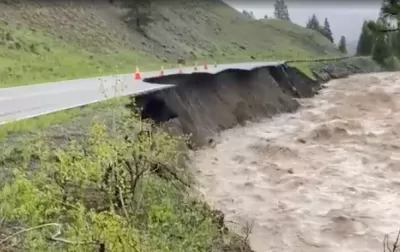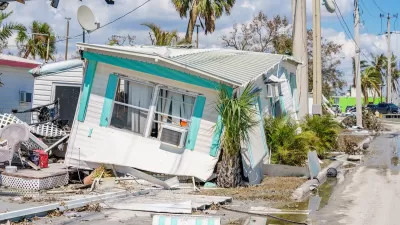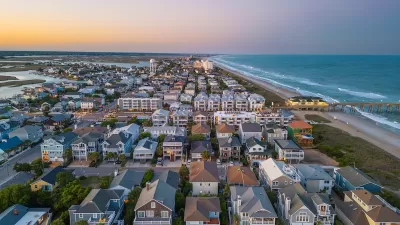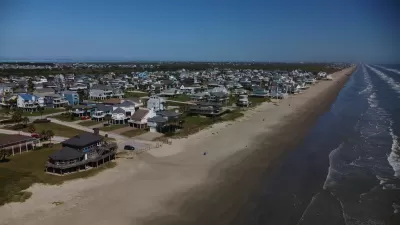This year’s historic floods ravaged communities already roiled by spiking housing costs and a shortage of available workforce housing near the nation’s oldest national park.

Communities in the American West are facing a double crisis as the rising cost of housing is compounded by historic flooding. In Carbon County, Montana, the median home price outstrips the budget of a low- to medium-income worker by more than $100,000. Writing in High Country News, Nick Mott describes the damage incurred by residents during this year’s catastrophic floods.
To make ends meet, many Montanans live in manufactured housing, which can be much less expensive to purchase and maintain than site-built homes. But “Across Montana, about one in five mobile homes are at a high risk of flooding — higher than the national average of one in seven.” In Fromberg, a small town in Carbon County hit hard by this year’s megafloods, few residents have flood insurance. “Mobile home residents earn roughly half of the median annual income of the average American family living in a single-family home. That makes it even harder for them to prepare for and recover from disasters like floods.” Meanwhile, mobile home park owners have little incentive to make financially costly investments to make communities safer.
Mott points out that the recent floods illuminated a host of other issues straining the communities of workers living near Yellowstone and in similar areas. As climate change exacerbates extreme weather conditions and investors buy up mobile home parks for profit, mobile home residents and low-income workers are increasingly more vulnerable to losing their homes and livelihoods.
FULL STORY: When a housing crisis meets a megaflood

Planetizen Federal Action Tracker
A weekly monitor of how Trump’s orders and actions are impacting planners and planning in America.

Maui's Vacation Rental Debate Turns Ugly
Verbal attacks, misinformation campaigns and fistfights plague a high-stakes debate to convert thousands of vacation rentals into long-term housing.

San Francisco Suspends Traffic Calming Amidst Record Deaths
Citing “a challenging fiscal landscape,” the city will cease the program on the heels of 42 traffic deaths, including 24 pedestrians.

Amtrak Rolls Out New Orleans to Alabama “Mardi Gras” Train
The new service will operate morning and evening departures between Mobile and New Orleans.

The Subversive Car-Free Guide to Trump's Great American Road Trip
Car-free ways to access Chicagoland’s best tourist attractions.

San Antonio and Austin are Fusing Into one Massive Megaregion
The region spanning the two central Texas cities is growing fast, posing challenges for local infrastructure and water supplies.
Urban Design for Planners 1: Software Tools
This six-course series explores essential urban design concepts using open source software and equips planners with the tools they need to participate fully in the urban design process.
Planning for Universal Design
Learn the tools for implementing Universal Design in planning regulations.
Heyer Gruel & Associates PA
JM Goldson LLC
Custer County Colorado
City of Camden Redevelopment Agency
City of Astoria
Transportation Research & Education Center (TREC) at Portland State University
Jefferson Parish Government
Camden Redevelopment Agency
City of Claremont





























